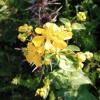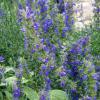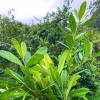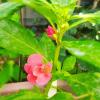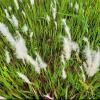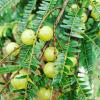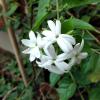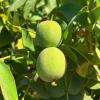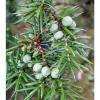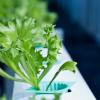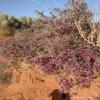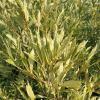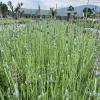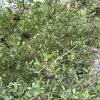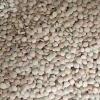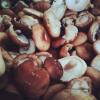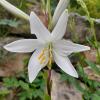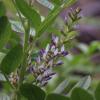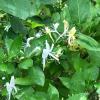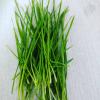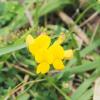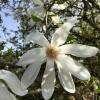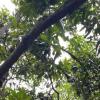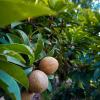Legend has it that if this plant is hung on doors or windows on St. John's birthday, it will keep away ghosts and devils for a year. In the Middle Ages, the Crusaders used the famous red oil of St. John's Wort (Hypericum Perforatum) to heal their battle wounds.
Plant extracts & derivatives
Plant extract aka botanical extract-based skin care products are one of the biggest trends in the beauty industry in recent years. Being naturally balanced and dense in active ingredients, botanical extracts are excellent fighters against skin aging and inflammation.
In traditional medicine, Hyssopus officinalis has the properties of a cleanser, both in and out of the body. The leaves hold an antiseptic and antiviral oil, and their leaves possess the same kind of fungus that produces penicillin.
Yerba mate (Paraguay tea; Ilex Paraguariensis) is primarily cultivated for the leaves and is esteemed as an aromatic, stimulating beverage with a somewhat bitter taste.
Jewelweed (Impatiens Balsamina also called Garden Balsam) is found widely over North America, mostly in wet and shady soils. This annual plant grows to a height of 3-5 feet with oval-toothed leaves and pendant-like red spotted flowers.
Imperata Cylindrica Root Extract is a potassium-rich extract derived from the roots of Cogon grass. Its roots form a rhizome network, including 60% of the plant's mass. It contains starch and simple sugars and has been used in traditional Chinese medicine.
In China, numerous jasmine species are used in treating hepatitis, cirrhosis of the liver, abdominal pain, headaches, insomnia, conjunctivitis, skin problems, and pain due to dislocated joints and broken bones.
The Black walnut (Juglans Nigra) is a large tree with dark glossy leaves. Water distilled from the green leaves was thought to heal running ulcers and sores. The afflicted person would bathe the problem areas with a cloth wetted by the extract to effect the cure.
The rind of the green fruit of Black Walnut (Juglans Nigra) has been used to treat ringworm, tetter, and diphtheria. The nut is a food source rich in manganese, which is important for nerves and cartilage.
Walnut (Juglans Regia) fruit shell is a byproduct of the food industry and the perfect raw material for producing cosmetic ingredients.
Juniper (Juniperus Communis) oil was the chief ingredient in gin-making. It was thought to stimulate the circulation and purify the blood.
Australia is one of the world’s most ancient and isolated lands, with some of the greatest surviving biodiversity on the planet and over 20,000 endemic plant species.
Rhatany’s (Krameria Triandra) habitat is primarily Peru and Bolivia. However, various species are known to be found in the desert southwest of the United States.
The bay laurel herb (Laurus Nobilis), a symbol of glory and reward, has been used throughout history for various purposes, including extensive use as a flavoring in foods and as an aromatic in perfumes.
French lavender (Lavandula angustifolia) is credited with many rich qualities. When used externally, its preparations had antiseptic and disinfectant properties.
The Egyptians have prepared oil and ointment from the Lawsonia Inermis flowers to make the limbs supple. Since 1890, Henna (Lawsonia Inermis) has been widely used for tinting hair, usually as a shampoo.
Japanese mushrooms have been prized in the Orient for at least two thousand years, both as flavorful food and as a treatment for systemic conditions related to aging. The shiitake mushroom (Lentinus edodes) is native to Japan, China, Korea, and temperate parts of Asia.
This White Lily (Lilium Candidum) was popular among ancient Greeks and Romans. The Church of the Madonna revered it because its delicate whiteness was considered a symbol of purity.
Honeysuckle's (Lonicera Caprifolium) aromatic and cleansing properties have been used extensively in soaps and fragrances. Lonicera Caprifolium is the primary ingredient in the famous French soap Le Petit Marseillais.
One of the most familiar harvested young grasses used mostly in nutritional areas is wheatgrass. Wheatgrass (Lophophytum Elongatum) is the green-growing, early form of the wheat grain.
The Lotus (Lotus Japonicus) plant is an especially revered plant in Asian cultures where it is considered to be a plant of renowned beauty. The plant, the roots, leaves, flowers, and seeds have all found uses in food, health, and cosmetics.
Mango (Mangifera Indica) trees have long been appreciated as bearers of luscious fruits. Native to India, Burma, and Malaya, mangoes were some of the first fruits cultivated, supposedly as long as 4000 years ago.
Manilkara Multinervis Leaf Extract is a brown-to-red syrupy liquid or pink-to-beige powder, a cosmetic active ingredient obtained from the leaves of the African Manilkara with an anti-aging effect. It has a dual protective impact on structural proteins collagen and elastin.
